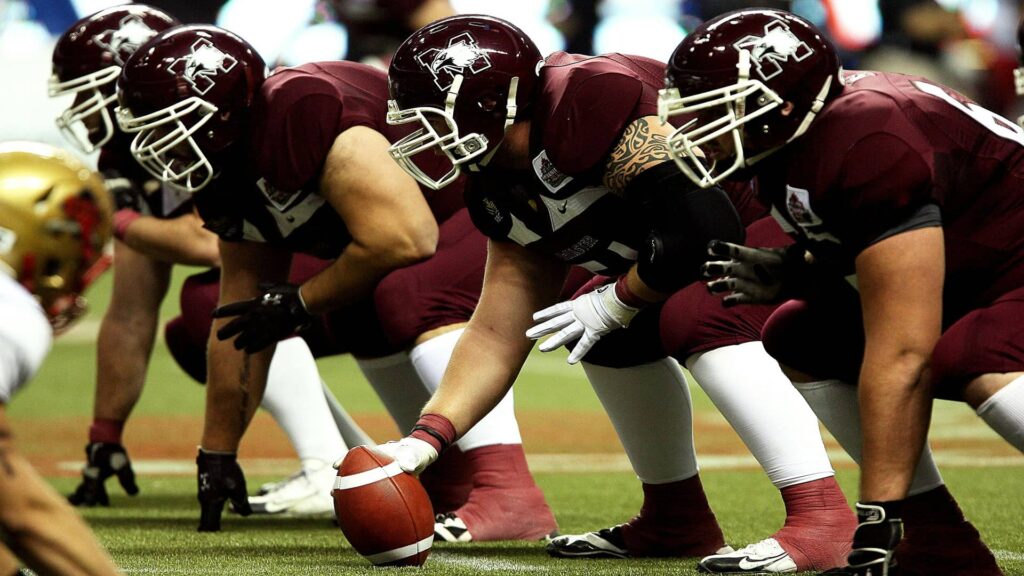American football is more than just a game; it’s a chess match on the gridiron where each player, coach, and fan is fully invested in every play. Understanding the fundamentals—like how to tackle, how to throw, and the number of players on the field—is key to truly grasping the sport. Whether you’re a player learning the ropes or a fan wanting to dive deeper into the action, this guide will help you master the basics.
How to Tackle in American Football
Tackling is one of the most critical skills in American football. It’s not just about brute force; it’s about precision, timing, and technique. When done right, a good tackle can change the course of a game.
To tackle effectively, start with your stance. Keep your feet shoulder-width apart, knees bent, and body low. The lower you are, the more leverage you have. Eyes on the ball carrier—this helps with aim. As you approach, keep your head up and aim your shoulder for the opponent’s midsection. Wrap your arms around their waist or legs, and drive through with your legs. Remember, it’s not just about bringing them down; it’s about doing it safely and legally. The shoulder leads, the head stays out of the way, and you keep moving your feet until the whistle blows.
Tackling drills are crucial to perfect this technique. You’ll often see drills that focus on the “hit and drive” motion, where players hit the tackling dummy and drive their legs to push it backward. Another common drill is the “angle tackle,” where players practice approaching from the side and driving their opponent toward the sideline, cutting off any escape routes.
How to Throw an American Football
Throwing a football may seem simple, but mastering American football the technique can take years. From your grip on the ball to your follow-through, every aspect of the throw needs attention. Let’s break it down.
Start with your grip. Hold the football with your fingers on the laces, not too tight, not too loose. This gives you control and allows the ball to spin in a tight spiral. When you’re ready to throw, stand with your feet shoulder-width apart, knees slightly bent. As you draw the ball back, keep your elbow up and eyes on your target. Your throwing motion should be fluid, leading with your shoulder and following through with your arm. As you release the ball, snap your wrist to give it that spiral, ensuring it cuts through the air straight and true.
Footwork is just as important as the throw itself. If your feet are in the wrong position, your throw won’t have power or accuracy. Practice stepping forward with your non-throwing foot as you release the ball, ensuring your body is aligned with your target. It might seem like a lot to think about, but with enough practice, it becomes second nature.
Drills like the “one-knee drill” help quarterbacks focus on their upper body mechanics, while “route tree drills” help them sync with their receivers. These drills are essential for building muscle memory, so when game time comes, you’re ready to deliver the perfect pass.
American Football Tackling Drills
Tackling drills are designed to build confidence and refine technique. The right drill can make all the difference between a solid hit and a missed tackle. Here are a few drills that every player should master.
The Oklahoma Drill: This classic drill is all about intensity. Two players line up opposite each other—one as the ball carrier, the other as the tackler. On the whistle, the ball carrier tries to get past the tackler, who must take them down. It’s a drill that emphasizes physicality and teaches players to stay low and drive through their opponent.
The Hawk Tackle Drill: Popularized by the Seattle Seahawks, this drill focuses on safe tackling techniques. Players practice wrapping up the ball carrier and driving their shoulder into the opponent’s body while keeping their head to the side. The aim is to ensure the tackler’s safety and avoid helmet-to-helmet contact.
The Angle Tackle Drill: In this drill, the ball carrier runs along a straight line, and the tackler approaches from an angle. The objective is to cut off the ball carrier’s path and force them out of bounds or to the ground. This drill is particularly effective in teaching players how to approach a moving target and make a tackle in open space.
How Many Players Are in American Football?
The number of players on the field is a fundamental aspect of American football. Each team has 11 players on the field during a play, totaling 22 players actively participating in the game. These 11 players are divided into offense, defense, and special teams, depending on the phase of the game.
On offense, the 11 players include a quarterback, running backs, wide receivers, tight ends, and offensive linemen. Each has a specific role, whether it’s to throw the ball, catch it, run with it, or block for others. On defense, the players are divided into defensive linemen, linebackers, and defensive backs, each tasked with stopping the opposing team’s offense.
Special teams consist of players who take the field during kicking plays, like punts, kickoffs, and field goals. The number remains the same—11 players—but their roles are different. Understanding the number of players and their roles in American football gives you a clearer picture of how the game operates at every level.
How Many Players Are on an American Football Team?
Beyond just the 11 on the field, an American football team’s roster is much larger. At the professional level, teams can have up to 53 players on their active roster. This includes starters, backups, and special teams players. In college football, rosters can be even larger, often exceeding 100 players, though only a subset can dress for each game.
Why so many players? Football is a physically demanding sport. Players specialize in specific roles, and with the intensity of the game, substitutions are frequent. Having a deep roster ensures that teams can keep their players fresh and adapt to different situations as the game progresses.
For example, a team might rotate defensive linemen throughout the game to keep them from getting tired, or bring in a backup quarterback if the starter gets injured. The depth and flexibility of a team’s roster can be a significant factor in their success over a long season.
Conclusion
Mastering American football fundamentals involves understanding more than just the rules and basic skills. It’s about appreciating the intricacies of each position, the importance of technique in tackling and throwing, and the strategy behind the game’s structure.
Football is as much a mental game as it is a physical one. Every play is a new opportunity to outsmart your opponent, whether you’re driving the ball downfield or making a game-saving tackle. By focusing on the basics—tackling, throwing, and understanding player roles—you lay the groundwork for success on the field.
For those looking to dive even deeper into the sport’s physical demands, studies show that American football requires a high level of applied physiology, emphasizing strength, endurance, and tactical awareness link. Furthermore, it’s important to recognize the risks associated with the game, particularly concerning concussions and brain health, as highlighted in research on neurodegenerative risks among players link.
The more you know, the more you can appreciate the beauty of the game. Whether you’re on the field or in the stands, understanding these fundamentals will enhance your experience and your love for football.
Frequently Asked Questions
What are the essential skills needed to master American football?
The essential skills for mastering American football include strength, speed, agility, hand-eye coordination, and tactical awareness. Players need to excel in their specific positions, whether it’s throwing, catching, blocking, tackling, or running.
How can I improve my football performance through training?
To improve performance, focus on position-specific drills, strength and conditioning, speed training, and agility exercises. Regular practice sessions, proper diet, and rest are also critical. Working with coaches to improve technique and understanding the nuances of your position will enhance your overall game.
What are some key tactics used in American football?
Key tactics in American football include offensive strategies like passing attacks, running plays, and play-action fakes, as well as defensive tactics like blitzing, zone coverage, and man-to-man coverage. Effective teams are those that can adapt their tactics to exploit their opponent’s weaknesses.
How important is understanding the rules in mastering American football?
Understanding the rules is crucial to mastering the game. Knowing how to avoid penalties, when to use timeouts, how the clock works, and understanding things like offsides, false starts, and pass interference gives players and teams a strategic edge during games.
What type of training do expert football players undergo?
Expert football players undergo intensive physical training, including weightlifting, sprinting, endurance exercises, and flexibility work. They also engage in position-specific drills, film study to understand tactics, and mental conditioning to improve focus, decision-making, and game awareness.
What is the importance of teamwork in football?
Teamwork is essential in football because the success of each play depends on the coordination of all 11 players on the field. Each player has a specific role, and executing plays effectively requires trust, communication, and collaboration between teammates.
How can I develop better football tactics and strategies?
To develop better tactics and strategies, study the game through watching professional games, reviewing game film, and learning from experienced coaches. Understand how to adjust plays based on the defense or offense you face and practice different scenarios during training to improve adaptability.
What are the basic rules of American football that beginners should know?
Basic rules include understanding downs and distance, how scoring works (touchdowns, field goals, extra points), and the role of penalties such as offsides, holding, and pass interference. Knowing how the game clock operates and the purpose of timeouts are also key fundamentals.
How do expert players stay mentally sharp during games?
Expert players stay mentally sharp by maintaining focus, quickly reading defensive or offensive schemes, and staying aware of the game situation. They practice mental conditioning, visualization, and work on reacting instinctively through repetition of plays during training.
Why is learning the tactics and rules essential to mastering American football?
Learning the tactics and rules is essential because it helps players make smarter decisions on the field, avoid penalties, and recognize opportunities to exploit the opponent’s weaknesses. Mastery of tactics and rules allows players to play more efficiently and strategically, enhancing overall team performance.



